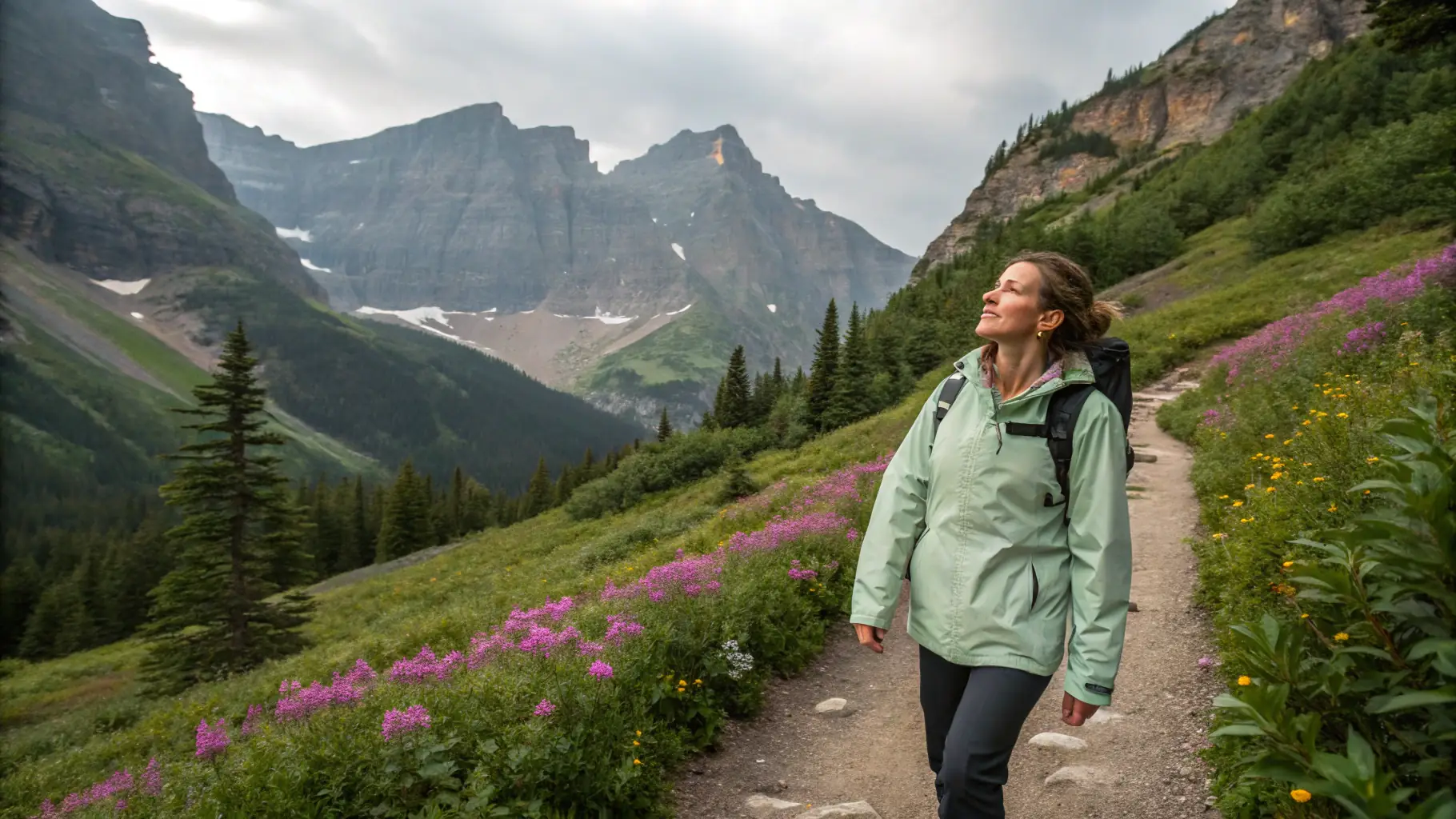Finding the right Hiking Backpack for you can be a bit overwhelming. Whether you’re planning a weekend hike, a cross-country adventure, or just need a reliable bag for daily use, choosing the right backpack is crucial. A well-designed backpack can make your journey comfortable, organized, and enjoyable, while the wrong one can lead to discomfort, frustration, and even injury. In this ultimate guide, we’ll walk you through everything you need to know to find the perfect backpack for your needs.
Choosing the right hiking backpack is crucial for a comfortable and enjoyable experience on the trails. This guide will help you navigate the various options available, ensuring you select the perfect backpack for your needs. Consider the volume, weight capacity, and features that align with your hiking style and the terrain you’ll be traversing. Backpack size is a critical factor. Determine the amount of gear you’ll need to carry and select a backpack with the appropriate volume.
Consider the weight of your gear and the duration of your hike. A well-fitted backpack distributes weight evenly, minimizing strain on your back and shoulders. Comfort and ergonomics are essential for long hikes. Look for features like adjustable straps, breathable back panels, and hip belts to ensure a comfortable fit. Properly fitting your backpack is crucial for preventing discomfort and injuries during your hike.
1. What Size is the Right Hiking Backpack
The first step in choosing the right backpack is understanding how you’ll use it. Different activities require different types of backpacks:
Daypacks (10-30 liters): Ideal for short hikes, commuting, or day trips.
Weekend Packs (30-50 liters): Great for overnight trips or multi-day hikes with minimal gear.
Multi-Day Packs (50-70 liters): Designed for longer trips where you’ll need to carry more gear.
Travel Backpacks (40-70 liters): Built for travel, often with features like lockable zippers and suitcase-style openings.
Specialty Packs: Includes climbing packs, ultralight backpacks, and technical packs for specific activities.
2. Consider Capacity
The capacity of a backpack is measured in liters and determines how much gear you can carry. Here’s a quick breakdown:
10-20 liters: Small enough for daily use or light hikes.
20-35 liters: Suitable for day hikes or short trips.
35-50 liters: Perfect for weekend trips or longer hikes.
50+ liters: Best for extended trips or carrying heavy loads.
Pro Tip: Always choose a backpack with a little extra capacity than you think you’ll need for flexibility.
3. Focus on Fit and Comfort
A backpack that doesn’t fit properly can cause discomfort or even injury. Here’s how to ensure a good fit:
Torso Length: Measure your torso from the base of your neck to the top of your hips. Choose a backpack that matches your torso length.
Hip Belt: The hip belt should sit comfortably on your hips, transferring most of the weight to your legs.
Shoulder Straps: Should be padded and adjustable, with no gaps or excessive pressure.
Sternum Strap: Helps stabilize the load and reduce shoulder strain.
Ventilation: Look for padded back panels with mesh for airflow to reduce sweating.
4. Evaluate Features
The right features can make your backpack more functional and convenient. Consider the following:
Compartments: Multiple pockets and compartments help with organization.
Hydration Compatibility: Look for a sleeve and tube port for a hydration bladder.
Access Points: Top-loading, front zippers, or side zippers for easy access.
Compression Straps: Help stabilize the load and reduce bulk.
Attachment Points: Loops or straps for trekking poles, ice axes, or other gear.
Rain Cover: Built-in or included rain covers protect your gear in wet weather.
5. Material and Durability
The material of your backpack determines its weight, durability, and weather resistance:
Nylon: Lightweight, durable, and water-resistant. Look for denier (D) ratings
(e.g., 210D, 600D) – higher numbers mean thicker, more durable fabric.Polyester: Less expensive but less durable than nylon.
Ripstop Fabric: Reinforced to prevent tears from spreading.
Waterproofing: Some backpacks come with waterproof coatings or materials like TPU laminate.
6. Hiking Backpage Weight Considerations
The weight of the backpack itself matters, especially for long hikes or ultralight adventures:
Ultralight Backpacks: Made from lightweight materials but may sacrifice durability.
Standard Backpacks: Heavier but more durable and feature-rich.
Pro Tip: Balance weight with durability and functionality based on your needs.
7. Try Before You Buy
If possible, try on the backpack before purchasing. Load it with weight
(most stores have sandbags for this purpose) and walk around to test the
fit and comfort. Pay attention to:
How the weight is distributed.
Any pressure points or discomfort.
Ease of adjusting straps and buckles.
8. Set a Budget
Backpacks range from budget-friendly options to high-end models. While it’s tempting to go for the cheapest option, investing in a quality backpack can save you money in the long run by lasting longer and providing better comfort.
Budget: 50−50−100 (basic daypacks or entry-level hiking packs).
Mid-Range: 100−100−200 (feature-rich packs for most users).
High-End: $200+ (technical packs for serious adventurers).
9. Read Reviews
Before making a final decision, read reviews from other users. Look for feedback on:
Comfort and fit.
Durability and material quality.
Ease of use and functionality.
10. GearFinders Top Hiking Backpack Recommendations
Here are some highly-rated backpacks for different purposes, all available on Amazon.ca:
Best Daypack – Osprey Daylite Plus (26 Liters)
Why It’s Great: Lightweight, versatile, and perfect for day hikes, commuting, or travel.
Amazon.ca Link: Osprey Daylite Plus
Best Weekend Pack – Deuter Speed Lite 30 (30 Liters)
Why It’s Great: Comfortable, durable, and designed for fast-paced adventures.
Amazon.ca Link: Deuter Speed Lite 30
Best Multi-Day Pack – Oprey Atmos AG 65 (65 Liters)
Why It’s Great: Excellent load support, ample storage, and perfect for multi-day hikes.
Amazon.ca Link: Osprey Atmos AG 65
Best Ultralight Pack – HOMIEE 50-60L Hiking Travel Camping Backpack
Why It’s Great: Ultra-lightweight, waterproof, and perfect for long-distance hikes.
Amazon.ca Link: HOMIEE 50-60L Hiking Travel Camping Backpack
Best Budget Daypack – Teton Sports Explorer 4000 (65 Liters)
Why It’s Great: Affordable, spacious, and great for beginners or budget-conscious adventurers.
Amazon.ca Link: Teton Sports Explorer 4000
Best Women-Specific Pack – Osprey Kyte 46 (46 Liters)
Why It’s Great: Designed specifically for women, with a comfortable fit and versatile features.
Amazon.ca Link: Osprey Kyte 46
Best Tactical Backpack –5.11 Tactical Rush 72 (55 Liters)
Why It’s Great: Durable, rugged, and designed for tactical use or heavy-duty adventures.
Amazon.ca Link: 5.11 Tactical Rush 72
Final Thoughts
Choosing the right backpack is a personal decision that depends on your needs, preferences, and budget. By considering factors like purpose, capacity, fit, features, and durability, you can find a backpack that will serve you well on all your adventures. Remember, a great backpack isn’t just a bag—it’s your partner in exploration.
Consider our recommended light weight camp stoves, ideal for day hikes.
Happy trails!




